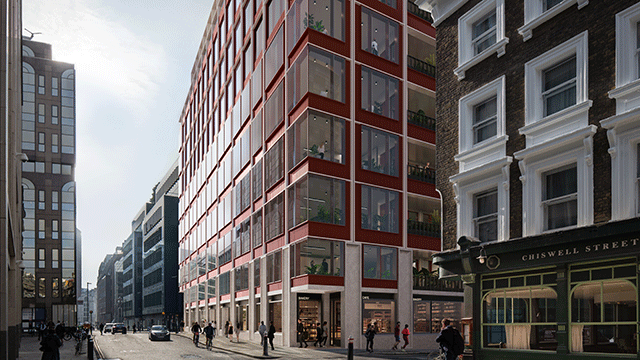Where are we in the cycle? That, as ever, is the multi-billion-dollar question. This week there were five signals that should help to divine an answer.
1) Residential. Chairing this week’s Movers & Shakers residential event, I asked Berkeley chairman Tony Pidgley and Taylor Wimpey chief executive Peter Redfern whether there was a bubble in the London housing market. Both dismissed the notion. “There is no housing bubble,” said Pidgley emphatically. “A bubble is when a market is in distress and banks are giving 120% mortgages.” But Redfern, especially, suggested we were nearing the top. “Too strong for too long,” was his verdict. But while RBS followed Lloyds Bank this week in capping residential mortgages, outside the capital it’s a different story. The ‘frenetic’ pace of growth in London house prices, to borrow a phrase from Nationwide Building Society chief executive Graham Beale, is simply not being matched anywhere else in the country.
2) Flipping. Several City landlords have cashed in over recent weeks. For some the timing would have been long-planned, driven by consistent investment and asset management strategies. Others, spurred on by a frothy market made frothier still by a lack of stock, seem to be behaving more opportunistically. Why wouldn’t they try to cash in, all other factors being equal, given strong demand and a dearth of returns elsewhere?
3) Floating. Secure Income REIT, the UK’s latest real estate investment trust and the new vehicle led by Nick Leslau, gained as much as 24% on its public debut on Thursday. By any measure it was an impressive performance for the Madame Tussauds-to-health care landlord, highlighting a voracious appetite for real estate among stockpickers. It is especially impressive given how poorly many newly listed companies have performed this year. One caveat: the recently floated Just Eat and AO World began trading well in their first few days on the public markets but are now trading below their issue price.
4) Lending. Bank of England figures showed this week that net commercial property lending flows were negative again in April, though the fall was the smallest since June last year. “There is little doubt that a gradual improvement in credit conditions has begun and we wouldn’t be surprised to see net lending flows turn positive before the end of the year,” says Capital Economics. “The prolonged phase of deleveraging in the commercial property sector is now all but over, and it may not be long until a nascent pick-up in gross new lending feeds through into a recovery in net lending.” Wordy, yes, but that’s pretty emphatic for an economist. The corner in the lending market has been turned.
5) A sage calls it. I’ll come to that in a moment but where does this leave us? Not at the bottom for sure, but still some way short of the top. And, of course, there is no such thing as a national property market. The top end of the London residential market sits in a very different place on the curve to secondary, regional shopping centres. But if it’s a helicopter view you are after, you could do a lot worse than listen to Patrick Vaughan. Now chairman of LondonMetric, Vaughan has few rivals when it comes to laying claim to the title of most shrewd property investor of recent decades. Said the guru this week on announcing another year of exceptional performance: “I believe we are somewhere in the middle of the cycle for UK commercial property, in which an improving economy, the availability of reasonably priced credit and strong competition for supply makes the investment market very competitive, but I am confident that we will maintain a high level of investment and build on the activity this year for future outperformance and further excellent returns for our shareholders.”
The top, it would seem, is still some way off.
Damian.Wild@estatesgazette.com











